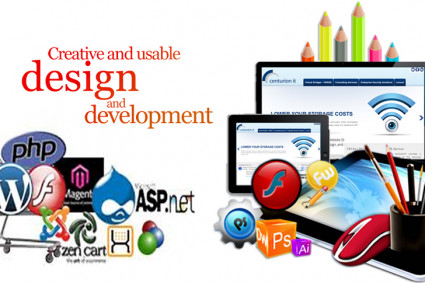In the landscape of comprehensive change, the spotlight is on digitization, compelling organizations to swiftly embrace innovative and digital technologies. Traditional manual processes are making way for precise digital tools and workflows, eliminating the pitfalls of errors, delays, and inflated costs. This paradigm shift empowers organizations to effectively mitigate risks, enhance and streamline processes, and curtail operational expenses.
Embracing this sweeping evolution, we delve into the realm of eSigning, where convenience and efficiency converge seamlessly. This blog uncovers the profound impact of DrySign in revolutionizing eSigning experiences, aligning perfectly with the ethos of enhanced digitization.
The Digital Transition
The digital transition has been in action for decades since the emergence of the internet. Organizations have realized the value and impact of digital tools on their business. They have increasingly invested in digital tools to rethink processes and train people.
Digital leaders can unlock more value through their vision and align it with their organizational goals. Digital transformation can change the way core functions and processes operate. Existing processes that are tedious and bring down organizations will become obsolete.
Leaders can marry technology and business goals to ensure operations run efficiently. This includes upskilling existing employees, building teams to extract value from technologies and innovate, and streamlining operations to achieve excellence.
Don’t miss to Read: https://bit.ly/46jMYTE
Steps for Critical Digital Transformation
Successful digital transformation has emerged as a pivotal endeavor for organizations seeking to thrive in the digital age. This multifaceted process involves a strategic sequence of steps, each playing a crucial role in orchestrating a seamless transition toward a digitally empowered future.
- A Digital Roadmap
The journey towards successful digital transformation begins with formulating a comprehensive digital roadmap. This roadmap acts as a guiding beacon, charting the course of action necessary to achieve the organization's digital aspirations. A key aspect of this phase involves aligning top leadership teams, including executives and stakeholders, to cultivate a shared vision. Garnering support from these influential figures fosters organizational alignment and paves the way for the commitment to key performance indicator (KPI) improvements. Furthermore, focusing on important domains that directly align with the organization's strategic goals and competitive edge is imperative. This focused approach ensures that digital initiatives are channeled towards areas that yield maximum impact, enhancing the overall effectiveness of the transformation journey.
- The Right Talent
Central to the successful execution of a digital transformation initiative is cultivating the right talent pool. As technology continues to reshape industries, organizations must equip their workforce with the necessary skills to navigate the digital landscape. Reskilling existing employees becomes a cornerstone of this endeavor, enabling them to bridge the digital skill gap and adapt to the changing requirements. This process, however, necessitates a deep understanding of the scope of digital technology, including emerging trends and innovative practices. Organizations must accurately identify the skills required and tailor their reskilling efforts accordingly. Additionally, attracting new talent with the requisite digital expertise enhances the organization's competitive advantage and accelerates the transformation process.
- Aligning Operations and Technology to Achieve Goals
Integrating technology with operational processes is pivotal to achieving digital transformation goals. Selecting an optimum operational model involves meticulously evaluating existing workflows, identifying bottlenecks, and streamlining processes through technology integration. This strategic realignment ensures that digital tools enhance the efficiency of operations, elevate overall productivity, and uphold quality standards. An equally vital aspect of this phase entails embedding best practices across the organization. By instilling standardized procedures, organizations can ensure consistent performance, minimize risks, and maximize the benefits derived from technological investments.
- Implementing the Latest Technologies to Empower Employees
One of the cornerstones of a successful digital transformation is the seamless incorporation of the latest technologies into the workforce's daily operations. In this regard, automation emerges as a transformative force, automating repetitive and time-consuming tasks. By liberating human resources from mundane responsibilities, automation empowers employees to redirect their efforts toward more strategic and value-added activities. This not only accelerates operations but also significantly reduces the margin of error, resulting in heightened operational efficiency and improved employee morale. Furthermore, user-friendly interfaces and intuitive applications contribute to a smooth transition, minimizing resistance to change and enhancing overall employee satisfaction.
- Bank on Data to take Actionable Decisions
Data, in the digital era, has evolved into a strategic asset with the potential to drive informed decision-making. Building a data-centric foundation involves establishing robust data collection, storage, and analytics systems. This infrastructure facilitates gathering valuable insights into customer behavior, market trends, and operational performance. These insights, in turn, empower organizations to make data-driven decisions aligned with their strategic objectives. By harnessing data as a catalyst for innovation and responsiveness, organizations can position themselves at the forefront of their industries.
- Scale Operations by Leveraging Technology and Data
As the digital transformation journey gains momentum, organizations must strategize for scalability. Customer retention becomes a key focus, with personalized experiences built upon the insights garnered from data analytics. Leveraging technology and data further drives growth by enabling the continual development and adoption of digital tools and methodologies. This ongoing evolution ensures that the organization remains agile and adaptable to the ever-changing digital landscape. Tracking and monitoring the impact of these changes through quantifiable metrics provide the necessary feedback loops to fine-tune strategies and ensure alignment with organizational goals.
An Introduction to eSignatures
Businesses pondering a digital transformation strategy require electronic signatures (eSignatures) to deliver a smooth client experience. Since digital experiences provide a first impression of speed, ease of use, and accessibility, E-signatures allow businesses to conduct transactions conveniently. Below are some of the benefits of its successful implementation:
Try the DrySign Free Version to get started: https://bit.ly/3PrRKaE
Benefits of E-signatures
· Flexibility: Adapting to Modern Workflows
· Ease of Use: Simplifying Complex Processes
· Real-time Mail Trails: Enhancing Transparency and Accountability
· Automation: Accelerating Workflows and Reducing Bottlenecks
· Branding: Consistency and Professionalism
· Cost Savings and Environmental Impact
Read More Information about “DrySign: Deploying Convenience in eSigning at Every Step”: https://bit.ly/3ZvS3pP





